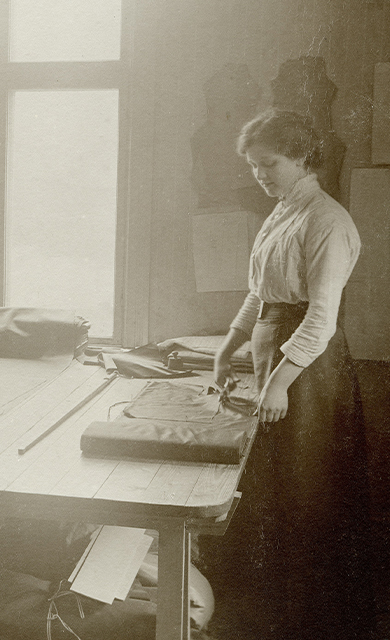
A tale of heritage
The Story of Tiger of Sweden spans more than 120 years. Since then, we have preserved craftsmanship and premium quality while continuously redefining contemporary tailoring in the fashion context of today.
The Tiger of Sweden Story is a tale marked by golden years and challenging times, propelled forward by courageous individuals with innovative minds. They all practiced what we call "A Different Cut" - an expression that goes beyond fabrics, scissors, threads, and stitches; it's a state of mind.
It all began in a small town on the west coast of Sweden. Just over 120 years later, you can find us in stores spread over three continents, plus the ever-growing digital world. And we are always ready for more.
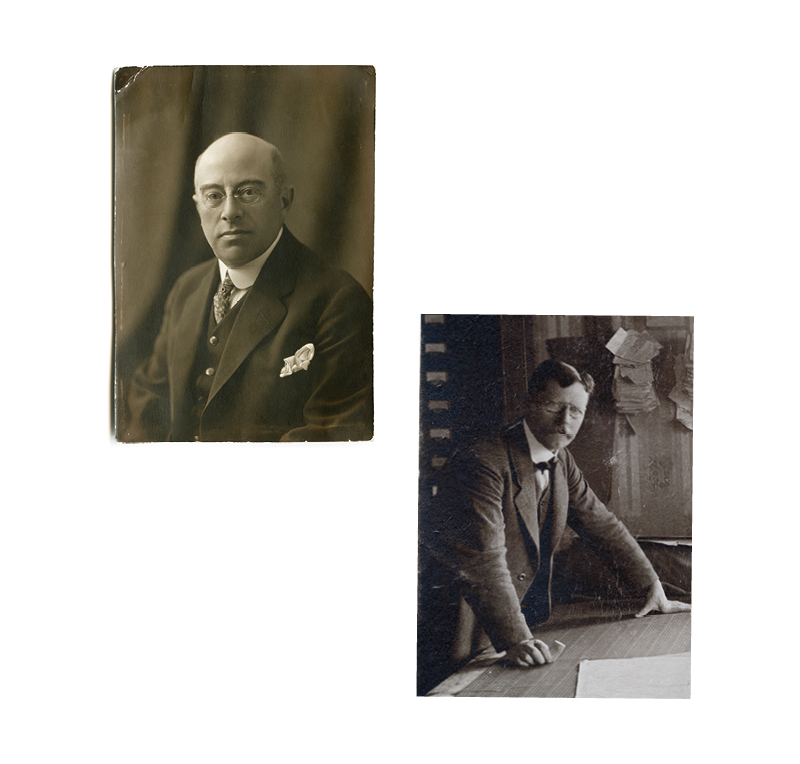
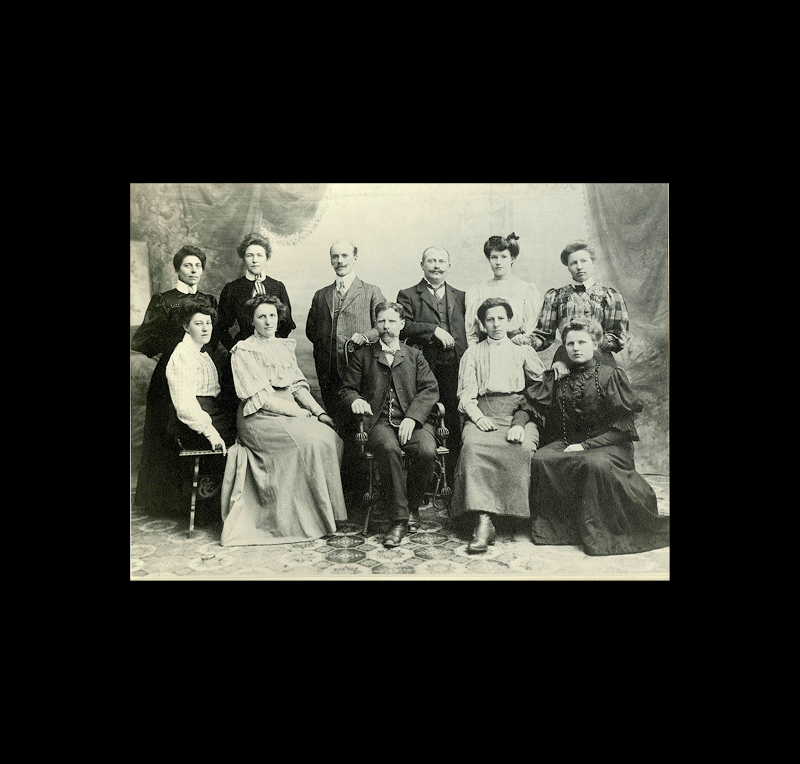
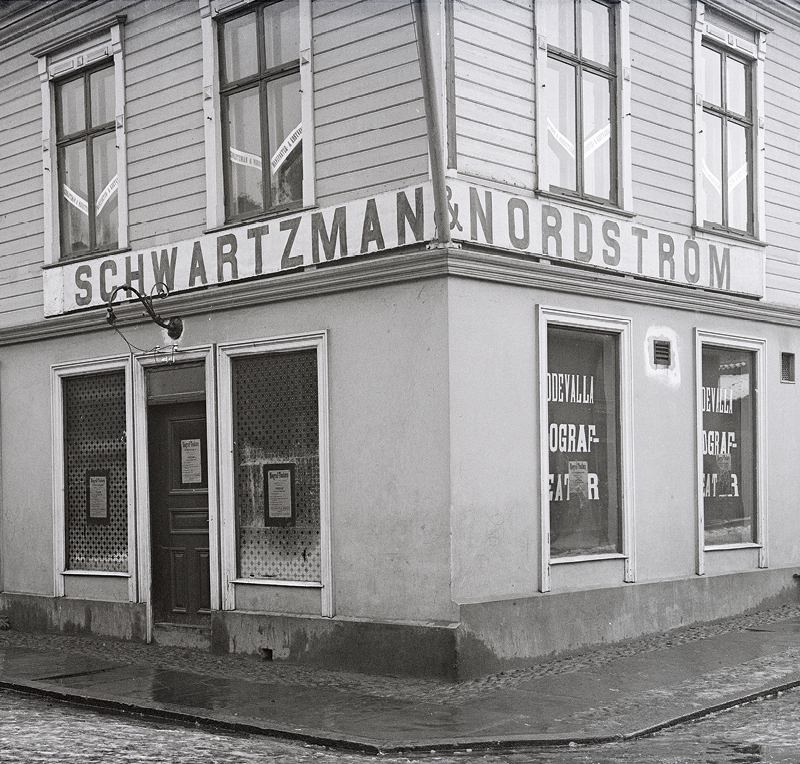
1903 – The founding
Established in 1903 by entrepreneurs Marcus Schwartzman and Hjalmar Nordström in Uddevalla, our founders dared to pioneer ready-to-wear tailoring in Sweden, disrupting an entire industry. Schwartzman revolutionised the conventional tailoring practices by reversing the traditional approach – instead of waiting for customers in the shop, we started reaching out to them. This change resulted in customers receiving their suits faster and more conveniently while maintaining high quality. The business flourished as a result.
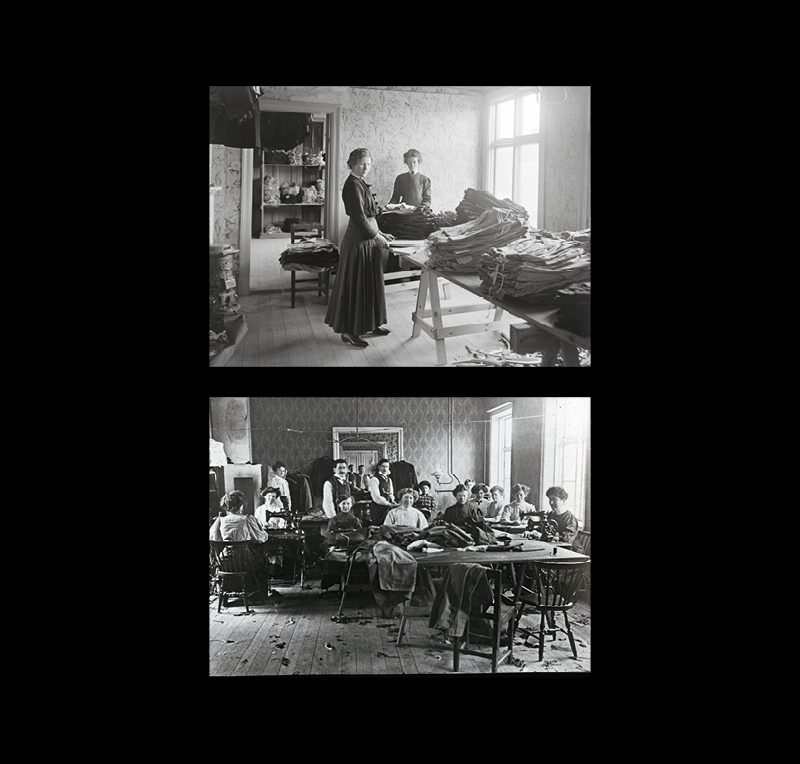
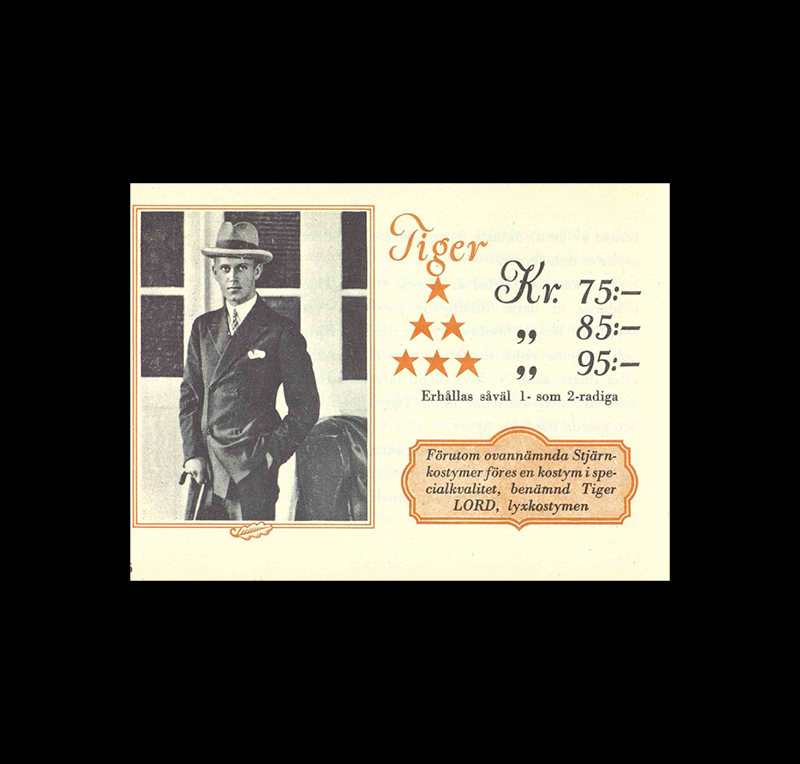
1923 – What's in a name?
However, entrepreneur Schwartzman wanted more, and from his interactions with customers, he soon recognised their desire to streamline the time-consuming process of individual fittings. Ready-made suits in top-quality materials with a modern design and a perfect fit were exactly what the market wanted.
The brand was still known as Schwartzman & Nordström when the 'Tiger' range of suits was introduced in the early 1920s. The suits were available in three levels of quality, graded by a star rating - from one to three stars. The range became an instant classic, so famous and popular that people started referring to the company as 'Tiger' - which later became Tiger of Sweden.
Due to the high demand for 'Tiger' suits, Tiger of Sweden opened a new, modern factory in an old brewery building in 1929. Through this new setup, we managed to deliver a total of 102,000 garments in that same year.
1930s - The golden years
The new factory opened up endless possibilities, and by 1936, Tiger of Sweden had become the largest clothing brand in Northern Europe, with over 1000 dedicated workers in Sweden, selling more than 140,000 garments annually.
In 1939, it was time to move to a fourth-time location, but the building was put on hold due to the Second World War. Rather than slowing down, Schwartzman reoriented production and began to sew for the Swedish army.
1940s – People first
When peace came in 1945, Tiger of Sweden again invested in an entirely new production setup. Not only to serve the ever-growing demand for suits but also to deliver best-in-class working environments for our employees. The new production facilities were very Scandinavian in their design and provided workers with daily perks, which were unheard of at this time. From an on-site gym and sauna to childcare services, a restaurant serving daily meals, built-in speakers playing music, state-of-the-art air conditioning systems and summer retreat housing.
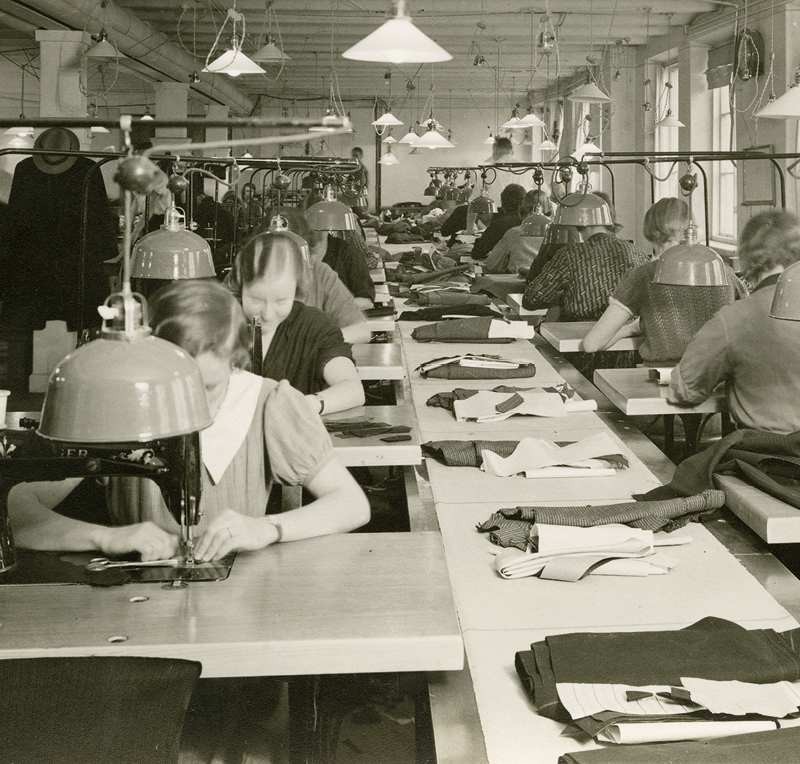
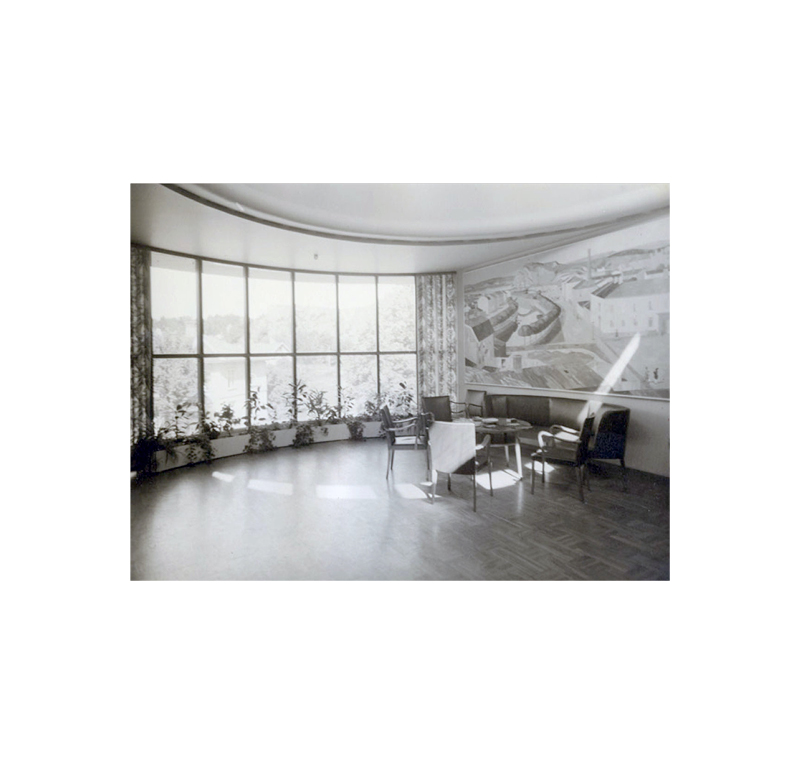
1960s – Tiger on the move
Tiger of Sweden has always been forward-thinking, and in the early 1960s, we expanded internationally into the U.K. and the U.S. Quite soon, we became a popular brand in the British market, forming ties with Marks & Spencer, among others, as re-sellers. After opening a North American H.Q. in the Empire State Building, we soon sold 70,000 gabardine suits a year in the U.S. alone.
In 1983, our CEO and production manager took the opportunity to buy the company out from the Swedish Government, and Tiger of Sweden was once again privately owned. Success continued growing in the U.S., but business slowly declined when the gabardine trend lost traction. Soon, Tiger of Sweden was sold once again to a new company of only four employees, Tiger Branson.
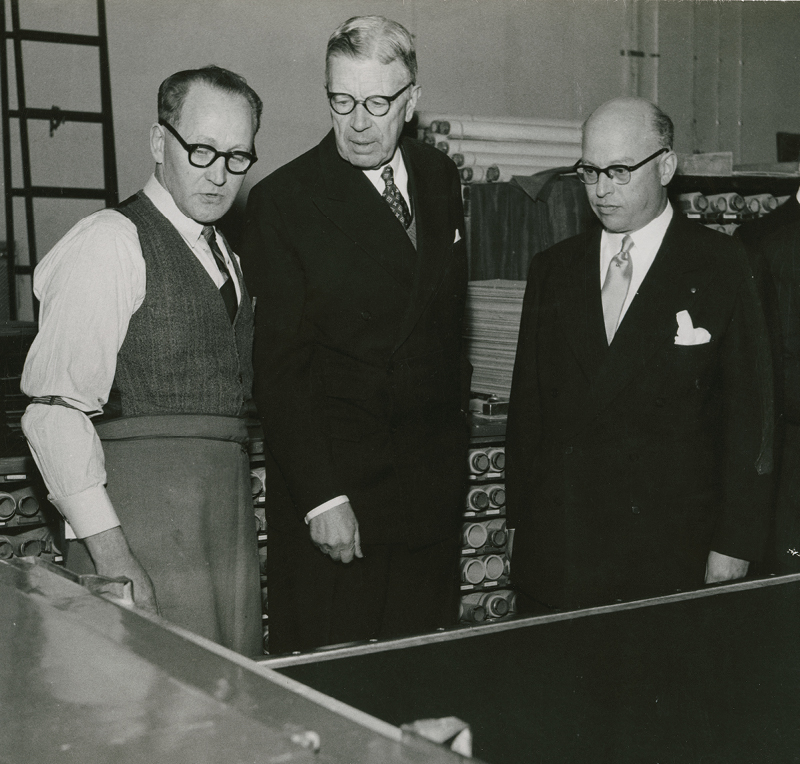
The king of Sweden Gustaf VI Adolf makes an official visit to the factory in recognition of Tiger of Sweden’s contribution to the fashion industry and the nation’s economy.
1993 - A different manifest
In the early 1990s, the suit market experienced a significant decline, halving in size. Tiger of Sweden responded by transforming the traditional suit, bringing it "out from the banks and onto the streets" with a radically slim-fit silhouette and a fresh brand philosophy. Faced with a pragmatic choice, we saw two possible paths forward - either close down or embark on a new beginning, embodying the ethos of "A Different Cut."
The new direction was reflected in the mantra that all Tiger of Sweden suits can be worn without a tie, all blazers can be worn with jeans, and our fit is so comfortable that you will forget to take the suit off when you go to bed.
This new approach aimed to break traditional norms and offer consumers a more versatile and wearable wardrobe.
The first collection was clearly inspired by the mod period of the Sixties, with slim silhouettes, narrow lapels and a completely new fit - far from previous Tiger of Sweden silhouettes. Trousers boasted a new low waist, a cut discreetly borrowed from the skinny jean. The new collection was very well received, and it was only a short time before suits were worn by artists, authors, rock bands and pioneering media personalities.
Our nearly century-old brand suddenly became the trendiest in Sweden. We successfully introduced "The 24/7 Suit" – clothing designed to seamlessly transition from work in the morning to socialising before heading home to sleep. This momentum continued in the following years. In 1995, artist and director Johan Renck earned the title of Sweden's Best Dressed Man, endorsing us as his favourite brand, "Tiger."
Notably, even Paul Smith recognised our positive trajectory. During an evening in Como, Sir Paul advised Roger Tjernberg to stay on the same path: "You shouldn't fool around with strange patterns and colours. Stay with the classic fabrics and keep creating modern fits."
During the 90s, our collaboration with the best fabric suppliers developed a new kind of deeper relationship. Weavers such as Cerruti, Vitale Barberis Canonico, and several others had served as our long-time suppliers. However, a new dialogue emerged, fostering mutual interest. They became as intrigued by our contemporary sensibilities as we were impressed by their skillful expertise.
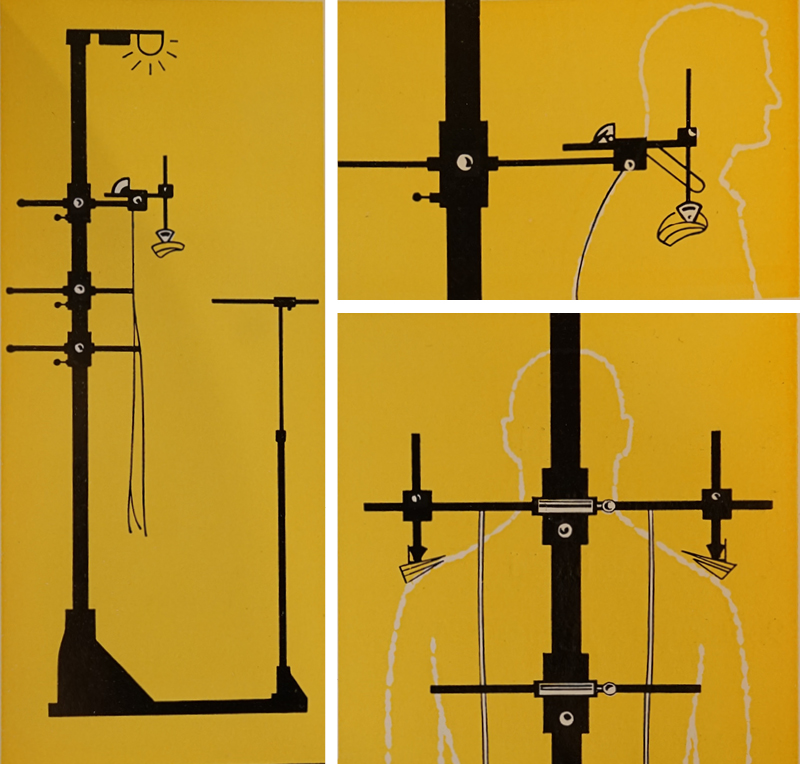
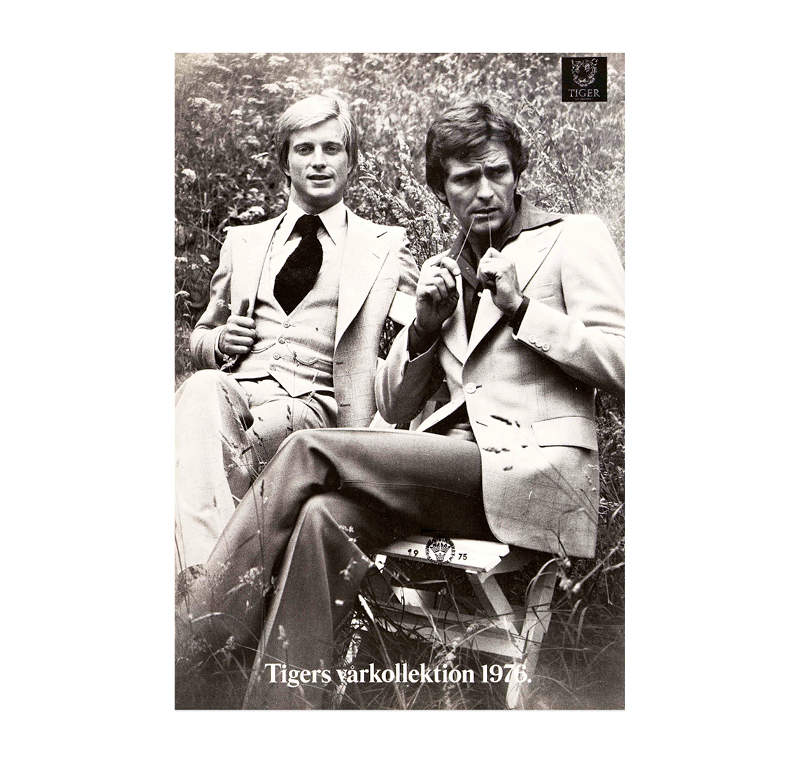
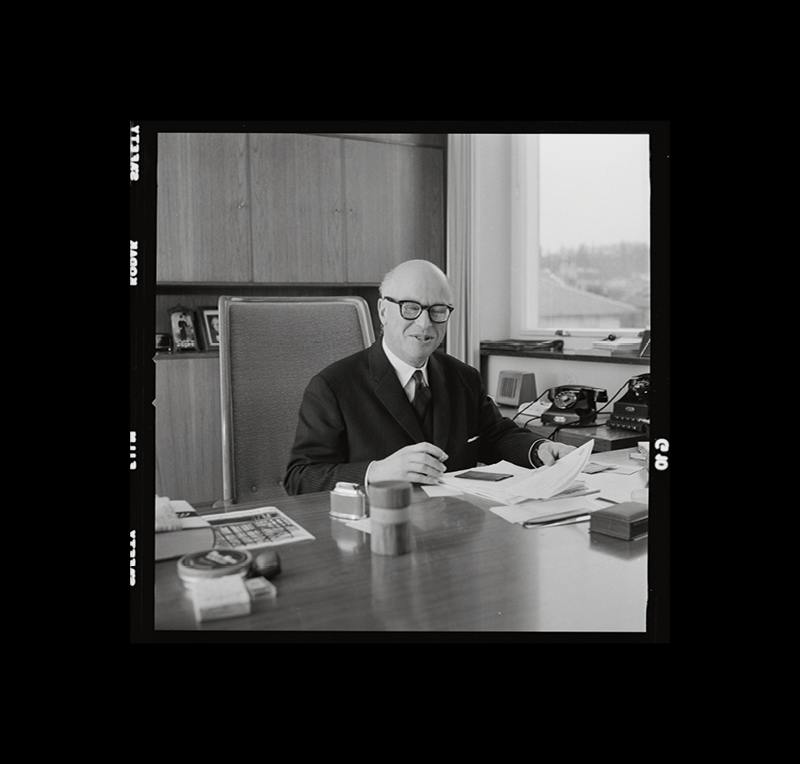
1997 – The Tiger of Sweden woman is born
For 94 years, the brand was missing something important: a strong, independent woman standing next to the Tiger of Sweden man. In 1997, Tiger of Sweden's Womenswear launched, completing the brand universe.
2001 – The launch of Tiger of Sweden Jeans
In 2001, Tiger of Sweden Jeans launched as a playful, optimistic complement to Menswear and Womenswear. With this new concept, the Tiger of Sweden wardrobe offered more freedom to mix tailoring pieces with premium denim, creating a collection that breathed the same sharp Scandinavian attitude as our more tailored pieces.
At about the same time, we opened our first Tiger of Sweden shop outside of Sweden in Convent Garden, London. Shortly after this followed shops in Oslo and Copenhagen – and a completely new head office in Norrlandsgatan in Stockholm. With a new, forceful owner behind us, a process of change began that ended in an alternation of generations when Roger Tjernberg, in 2008, handed over the role of CEO to David Thunmarker. The same year it was time to again move the main office to larger premises in Torsgatan in Stockholm.

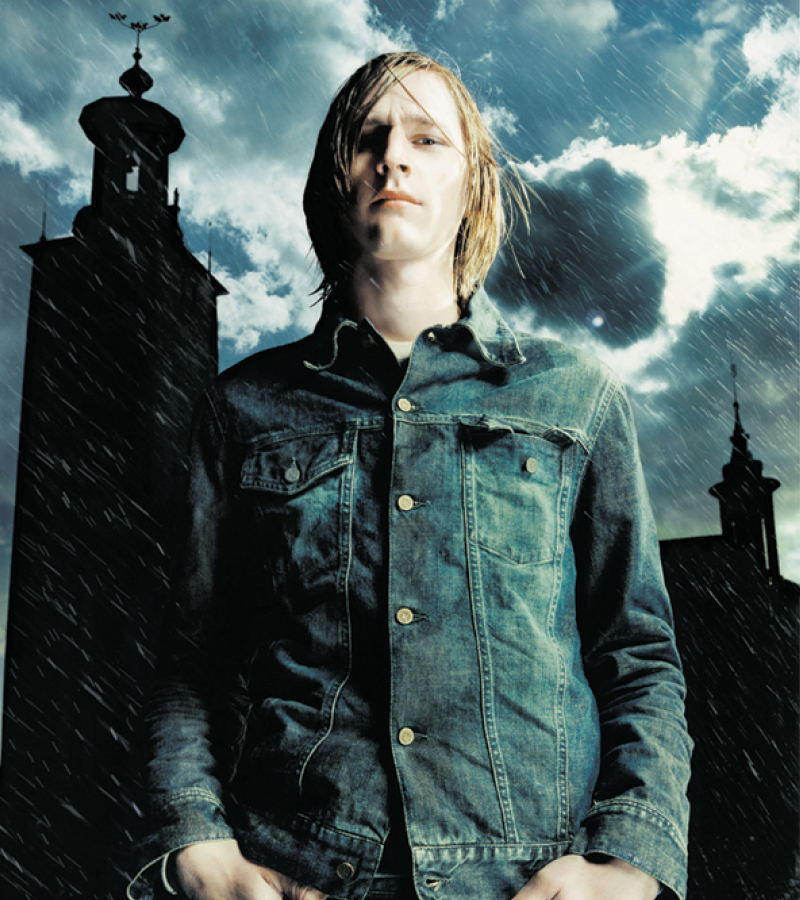
2018 – A brand refresh
Tiger of Sweden places all of its menswear, womenswear and denim collections under the same creative umbrella, tasking Swedish designer Christoffer Lundman with bringing coherence and a breath of fresh air to our brand.
Our visual identity was radically reshaped, creating a new design essence and establishing our own handwriting in a contemporary context.
2020 – A new chapter
At the beginning of 2020, a time of harsh industry headwinds, we decided to move against the tide and invest heavily in our brand and product universe. Bryan Conway was appointed as Creative Director to ensure an enduring and modern vision that remains relevant in today’s current landscape, focusing on building a sense of community. The decision to integrate Tiger Jeans into the mainline collection was also taken, further building on our commitment to creating a modern-day wardrobe for consumers.
2021 - The Launch of the ALL Collection
Summer 2022 welcomed our first genderfluid collection - genderless wardrobe icons designed with unique silhouettes tailored to men and women. As a brand that is formed by Swedish values of equality, function, and meaningful design, the ALL Collection is a step into the future - rooted in our past. Since then, the ALL Collection has continued to expand, promising a more extensive offering, including accessories and footwear.
2022 - Ben Cobb x MATCHES
In 2022, Tiger of Sweden designed an exclusive collaboration with Ben Cobb for MATCHES. Cobb has been a friend of Tiger of Sweden for many years, having long admired our elegant menswear. Combining Tiger's rich heritage as Sweden's oldest tailoring brand and Creative Director Bryan Conway's modern expertise, this collaboration is built on mutual admiration and shared love for beautifully cut clothes. Following the collection's success, the collaboration has continued for future seasons.
2023 - A proud heritage
This year marks 120 years since the founding of Tiger of Sweden. Since 1903, we have preserved craftsmanship and premium quality while continuously redefining contemporary tailoring in the fashion context of today.
